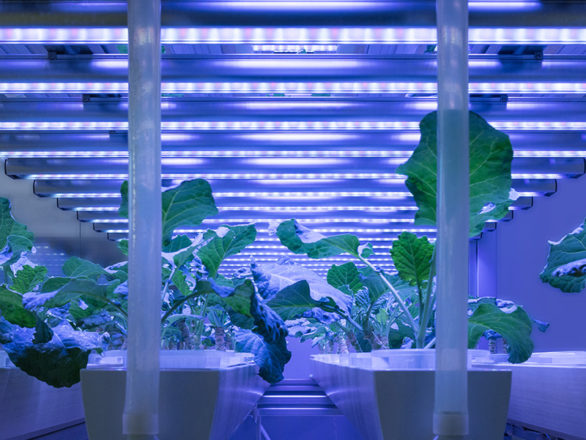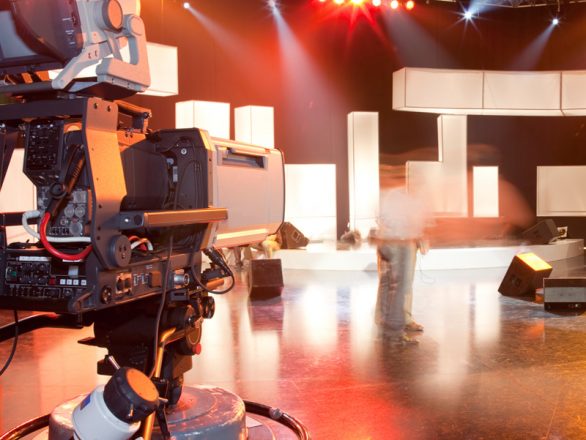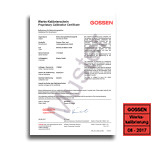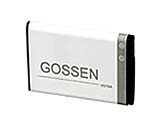MAVOSPEC BASE
Precision Measurement and Intelligible Qualification
Mavospec Base – the Innovative Spectrometer
We developed the Mavospec Base in order to make precise and easy photometry possible for everyone – whenever and wherever you need it. All measured quantities which are relevant for light such as illuminance, correlated color temperature, color rendering index according CIE 13.3 and IES TM-30-20, television lighting consistency index, color coordinates in accordance with various CIE standards, flicker, spectral power distribution, peak wavelength, dominant wavelength and photosynthetic photon flux density are determined for the measured spectrum and displayed such that they can be understood by experts as well as laypersons.
Safety due to calibration is very important to GOSSEN. As proof, a factory calibration certificate / factory calibration certificate can optionally be ordered. We recommend a calibration interval of 12 to 24 months, depending on the operating conditions of the measuring device. The recalibration takes place in the GOSSEN light laboratory on a checked and monitored optical bench.
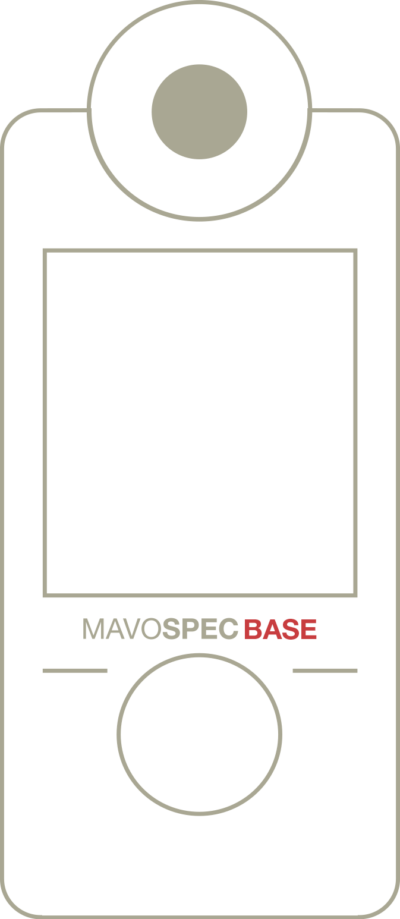
Many factors determine
how your light is perceived.
Spectral power distribution, color temperature, illuminance and other factors make light unique in each given situation. The Mavospec Base ascertains all relevant values, so that you can optimize your light for any specified requirements.
 SPECTRAL
SPECTRAL
POWER DISTRIBUTION
represents the radiant power of a light source for a wavelength or a waveband in the visible range. It provides us with information about color characteristics and can be used to compare the color temperature of different light sources. Information can be inferred from this regarding color rendering properties, because missing or attenuated portions of the spectrum result in color rendering errors.
 COLOR
COLOR
RENDERING INDEX
Ra is a measure of the color rendering properties of lamps and has a theoretical maximum value of 100. The higher the color rendering index, the better the color rendering properties of the lamp. Color rendering which is as natural as possible is achieved through the use of lamps with an Ra value of greater than 90. Ra is the arithmetic mean of the color deviation of the first 8 of 14 test colors according to DIN 6169. An extension to this is the color rendering index Re, which is calculated over all 14 test colors and the additional test color 15 (Asia Skin Color), which also takes into account saturated colors, leaf green and skin tones. DIN EN 12464 specifies the color rendering properties of lamps used to illuminate various types of rooms and activities.
 PHOTOSYNTHETIC
PHOTOSYNTHETIC
PHOTON FLUX DENSITY
The photosynthetic photon flux density PPFD (μmol/m2s) is a measure of the amount of photosynthetic active radiation PAR that is really available to plants. It represents the number of photosynthetic active photons falling on a given surface every second.
 COLOR
COLOR
COORDINATES
are a means of precisely defining a color, i.e. a color’s chromaticity as specified by the coordinates of the CIE diagram. The human eye is equipped with sensory cells for the perception of the three primary colors, namely red, green and blue. Photopic curves for the standard observer were ascertained in 1931 by the CIE and indicate sensitivity for the individual wavelength ranges.
 FLICKER
FLICKER
–
is the designation for fluctuation in the brightness of the light due to voltage fluctuation. The perception threshold for changes in luminance is a frequency-dependent quantity which indicates as of which relative change in luminance at a specified frequency perception takes place. These fluctuations have an impact on human health. A good LED driver smooths out voltage fluctuation and prevents flicker. The flicker value is a measure for the quality of the lamp or light fixture, and should be as low as possible.
 GAMUT
GAMUT
AREA INDEX
is a measure of the vividness of the color representation and is used primarily in the evaluation of exhibition and museum lighting. It is an indicator of how well the octahedral surface defined by the eight test colors of the Ra in the color space is covered by the light source.
 ILLUMINANCE
ILLUMINANCE
–
indicates with how much intensity a surface is illuminated. It amounts to one lux when a luminous flux of one lumen illuminates a surface of one square meter. Luxmeters are used to measure illuminance at horizontal and vertical surfaces. However, illuminance does not indicate the brightness impression of a room, because this depends to a great extent on the room’s reflective characteristics. As a rule, uniform light distribution is not achieved with normal lighting, for which reason specifications in the standards usually make reference to mean illuminance This value is calculated as the weighted arithmetic mean of all illuminance values in the room.
 COLOR
COLOR
TEMPERATURE
is a function which is used to quantitatively specify the respective color impression of a light source. The unit of measure for color temperature is degrees Kelvin (K). In concrete terms, it’s the temperature whose light effect is most similar to the color to be described at uniform brightness under specified observation conditions.
 COLOR RENDERING
COLOR RENDERING
IES TM-30-20
is a new standard that makes use of 99 reference colors which are distributed over the entire color space. As a result, it makes use of significantly more colors and hues for the calculation of fidelity index Rf, which describes the same relationship as color rendering index Ra. Gamut index Rg provides information concerning color saturation and color shift, and is similar to gamut area index GAI used previously for the examination of color rendering.
Documented Light Quality – for Reliable Production
and Verifiable Results
Mavospec Base stores measured values to the integrated SD card. These measured values are conveniently transmitted to the PC via the USB port. Evaluations can be conducted in a simple and adaptable fashion with the help of the included EXCEL sample reports including graphic visualization. Trend recordings with adjustable measuring interval can be done with the help of the included EXCEL datalogger. Trouble-free incorporation into customer systems and applications is also made possible by the open interface protocol.
-
ELECTRICAL INSTALLATION
spectral photometry
-
HORTICULTURE LIGHTING
spectral photometry
-
INTERIOR AND LIGHTING DESIGN
spectral photometry
-
IMPORT, SALES & COMMERCE
spectral photometry
-
SHOP LIGHTING
spectral photometry
-
WORKPLACE LIGHTING
spectral photometry
-
MEDICAL TECHNOLOGY
spectral photometry
-
STAGE, STUDIO AND FILM LIGHTING
spectral photometry
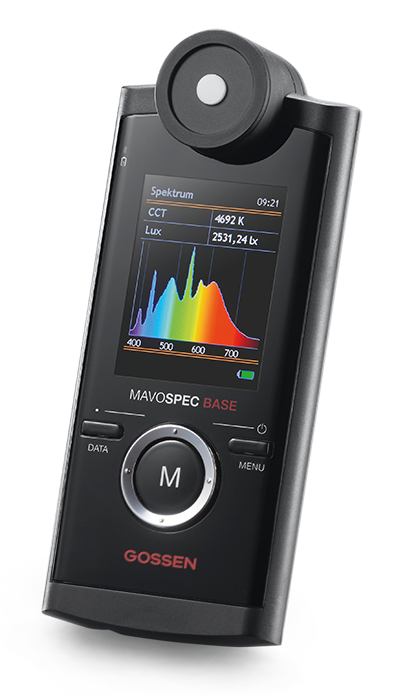
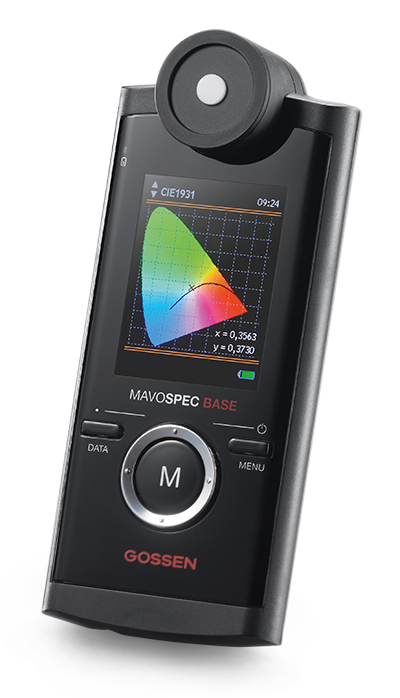
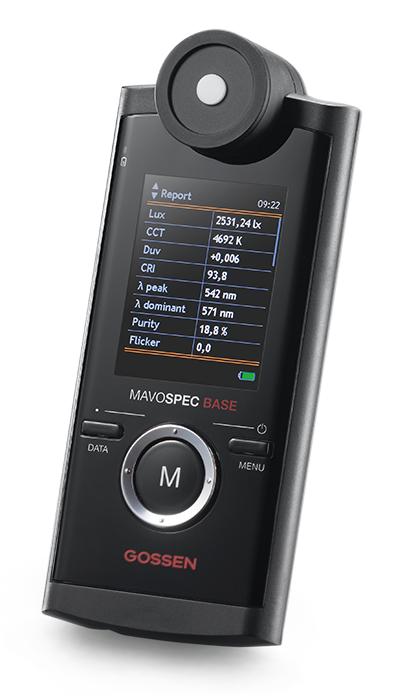
Downloads
SOFTWARE
CATALOGUES
PRESS INFORMATION
Mavospec Base – Technical Data
The qualification of light is becoming a decisive factor for an increasing number of industries. Mavospec Base supports you precisely with your requirements – from individual light sources to the efficient assessment of light situations.
PHOTOMETRY
| MAVOSPEC BASE | |
|---|---|
| Applications | Daylight, LEDs, halogen and more |
| Illuminance [lux] | 10 lx – 100 000 lx |
| Irradiance Ee | • |
| Luminous Efficacy Ratio LER | • |
| CCT – color temperature | 1600 K … 50 000 K (Duv > – 0.1) |
| Duv – color temperature difference relative to the Planckian locus |
(1600 K < CCT < 50 000 K) |
| Color Rendering IES TM-30-20 | Rf, Rg |
| CRI – color rendering index per CIE 13.3 | Ra, Re, R1 – R15 |
| Gamut Area Index GAI | • |
| Television Lighting Consisteny Index | TLCI, Colorist Advice Table, Qa Pie Chart |
| Peak wavelength | • |
| Dominant wavelength per CIE 15 | • |
| Color purity per CIE 15 | • |
| Chromaticity coordinates [x,y] per CIE 1931 | • |
| Chromaticity coordinates [u’,v’] per CIE 1976 | • |
| Chromaticity coordinates [u,v] per CIE 1960 | • |
| Flicker – index | 0,00 … 1,00 (f < 400 Hz and Flicker % > 1.0 %) |
| Flicker – % | 1.0 % … 100 % (f < 400 Hz) |
| Flicker – frequenzy | 2 Hz … 6000 Hz (Flicker % > 1.0 %) |
| Photosynthetic photon flux density |
PPFD, PPFD_UV, PPFD_Blue, PPFD_Green, PPFD_Red, PPFD_FR |
| Configurable measured value display | • |
| Selectable Units Of Measure | lx / °C – fc / °F |
MISCELLANEOUS
| MAVOSPEC BASE | |
|---|---|
| Mains power pack | 100 – 240 V (50/60 Hz) 0.15 A 5 V, 1 A (DC) USB port |
| Power supply via USB port | • |
| Rechargeable battery | Li-Ion 3.7 V – 890 mAh |
| Automatic shutdown | Programmable for display and device |
| Rechargeable battery life | ≥ 8 hours continuous operation |
| Charging time with power pack | 1.5 hours |
| Operating temperature | 5 – 40 °C |
| Dimensions [H x W x D] | 139 mm x 60 mm x 30 mm |
| Weight | 150 g |
| Scope of delivery | Meter, sensor cover cap, V070A rechargeable battery, power pack, USB interface cable, aluminum case, neoprene sheath, carrying strap, calibration protocol, operating instructions in German and English, 4 GB micro SDHC memory card including EXCEL file with several protocol templates, EXCEL file with datalogger template and operating instructions in German, English, French, Italian, Spanish as PDF, SD adapter |
SENSOR TECHNOLOGY, MEASUREMENT TOLERANCES
| MAVOSPEC BASE | |
|---|---|
| Sensor | CMOS image sensor, 256 pixels |
| Diffusor light-entry surface | Φ 7 mm |
| Distance, diffuser to surface to be measured | 25 mm |
| Error limit – cos like rating (f2′) | ≤ 3.00 % |
| Spectral range | 380 – 780 nm (VIS) |
| Full width at half maximum (FWHM) | ≤ 15 nm (typically 12 nm) |
| Physical resolution | ~ 1.72 nm |
| A-D converter | 16 bit |
| Wavelength reproducibility | ± 0.5 nm |
| Integration time | automatic, manually 10 ms – 3000 ms |
| Signal-to-noise ratio | 1000:1 |
| Spurious light | -25 dB |
| Dark current compensation | Automatic via temperature sensor |
| Measurement uncertainty, illuminance * | ± 3 % |
| Reproducibility, chromaticity * | ± 0.0005 |
| Measurement uncertainty, CCT * | ± 2 % |
| Measurement uncertainty, TM30* | ± 1.5 % |
| Measurement uncertainty, CRI* | ± 1.5 % |
| Measurement uncertainty, Flicker* | ± 1.5 % |
| * Standard light type A, 2856 K @ 1000 lx |
OPERATION, INTERFACES, MEMORY
| MAVOSPEC BASE | |
|---|---|
| Display | 2.1″ color TFT, 320 x 240 |
| Controls | 3 keys, ring controller |
| Interface | USB 2.0 |
| Interface protocol | open |
| Data storage | 4 GB micro SD / 500,000 measurements |
| Memory mode | Manual, auto |
| Data format | CSV |
| Subject to change without notice • Included function |
The Mavospec spectrometers in comparison
| Measured Quantity / Measuring Device | MAVOSPEC LITE | MAVOSPEC BASE |
|---|---|---|
| Luminance E [lx] | ■ | ■ |
| Irradiance Ee | ■ | |
| Luminous Efficacy Ratio – LER | ■ | |
| Spectral Power Distribution [mW/m²/nm] | ■ | ■ |
| Color Coordinates x,y [CIE 1931] | ■ | ■ |
| Color Coordinates u,v [CIE 1960] | ■ | ■ |
| Color Coordinates u‘,v‘ [CIE 1976] | ■ | ■ |
| Correlated Color Temperature [K] – CCT | ■ | ■ |
| Color Temperature Difference to Planck Duv | ■ | ■ |
| Color Rendering Index Ra, R1…R14 – CRI | ■ | ■ |
| Gamut Area Index – GAI | ■ | ■ |
| Measured Quantity / Measuring Device | MAVOSPEC LITE | MAVOSPEC BASE |
|---|---|---|
| Color Rendering IES TM-30 Rf, Rg | ■ | |
| Dominant Wavelength | ■ | |
| Purity | ■ | |
| Flicker Index, %, Frequency, Scope, IEEE 1798 | ■ | |
| Peak Wavelength | ■ | |
| Reference Mode | ■ | |
| PPFD [μmol/m²s], UV, Blue , Green, Red, FR | ■ | |
| TLCI | ■ | |
| Report | Excel Template | Excel Template |
| Datalogger | Excel Template | Excel Template |
| Aluminum Case | ■ |
| Measured Quantity / Measuring Device | MAVOSPEC LITE | MAVOSPEC BASE |
|---|---|---|
| Luminance E [lx] | ■ | ■ |
| Irradiance Ee | ■ | |
| Luminous Efficacy Ratio – LER | ■ | |
| Spectral Power Distribution [mW/m²/nm] | ■ | ■ |
| Color Coordinates x,y [CIE 1931] | ■ | ■ |
| Color Coordinates u,v [CIE 1960] | ■ | ■ |
| Color Coordinates u‘,v‘ [CIE 1976] | ■ | ■ |
| Correlated Color Temperature [K] – CCT | ■ | ■ |
| Color Temperature Difference to Planck Duv | ■ | ■ |
| Color Rendering Index Ra, R1…R14 – CRI | ■ | ■ |
| Gamut Area Index – GAI | ■ | ■ |
| Color Rendering IES TM-30 Rf, Rg | ■ | |
| Dominant Wavelength | ■ | |
| Purity | ■ | |
| Flicker Index, %, Frequency, Scope, IEEE 1798 | ■ | |
| Peak Wavelength | ■ | |
| Reference Mode | ■ | |
| PPFD [μmol/m²s], UV, Blue , Green, Red, FR | ■ | |
| TLCI | ■ | |
| Report | Excel Template | Excel Template |
| Datalogger | Excel Template | Excel Template |
| Aluminum Case | ■ |
■ Function / scope of delivery



